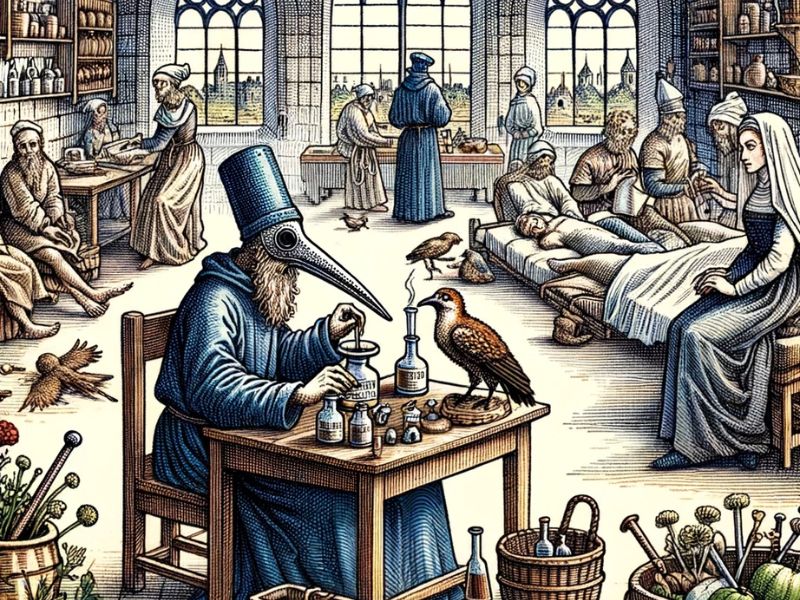

The Middle Ages, a period spanning approximately from the 5th to the 15th century, was a time of significant changes and challenges in terms of health and medicine. During this period, Europe witnessed a series of diseases and epidemics that profoundly influenced daily life and social structures.
During the Middle Ages, Europe was plagued by various diseases. The plague, also known as the “Black Death,” was one of the most devastating, causing the death of approximately one-third of the European population between 1347 and 1350. Other common diseases included measles and chickenpox, as well as viral infections like the flu. Poor hygiene conditions, a lack of advanced medical knowledge, and close proximity to domestic animals contributed to the spread of these diseases.
Medicine in the Middle Ages was a blend of traditional knowledge, superstitions, and religious influences. Medical practices included the use of herbs and plants to treat various illnesses, and the physicians of the time often relied on astrology to diagnose and heal patients. However, these practices were largely empirical and not based on a scientific understanding of diseases. The effectiveness of treatments varied, and many were based more on belief than on actual knowledge of the causes of illnesses.
Epidemics like the Black Death necessitated community responses and often led to the implementation of isolation and quarantine measures. However, responses were often inadequate due to limited understanding of disease transmission and the absence of organized healthcare systems. Epidemics had a significant impact on the population, causing not only deaths but also fear and social stigma.
The Middle Ages was a period when medicine and the understanding of diseases were still in development. The fight against epidemics and common diseases was a crucial aspect of life, influencing culture, religion, and social structures of the time. Studying this historical period offers valuable lessons about human resilience and the importance of science and medicine in society.
Sources
